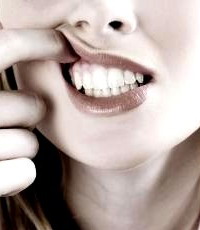
So, you know that pink stuff in your mouth is your gums, and they somehow hold your teeth in place. But, do you know what they’re really made of, how they function, and how you can take care of them? Check out our quick crash course on gums so you can better understand how this essential part of your mouth helps you each and every day.
What Are Gums?
Your gums, also called gingiva, is the pink, fleshy tissue inside your mouth that your teeth stick out of.
Essentially, they keep your teeth in line, act as a shock absorber, as well as a kind of nest and anchoring system for your teeth.
What Are Gums Made Of?
The gums themselves are made up of tissue that is covered by a layer of oral mucosa, a mucous membrane that helps keep the mouth clean.
The gums work in conjunction with a few other tissues. One is called the periodontal ligament or periodontal membrane, which is made up of tiny fibers that help adhere the gums to the teeth. The depression in the gums the teeth sit in is called the alveolar process and socket. Together, the gums, periodontal ligament, and alveolar process and socket are called the periodontium.
How Can I Tell If My Gums Are Healthy — Or Unhealthy?
One of the easiest ways to tell if you have healthy gums is if they don’t bleed when you brush them. If they do, make sure to gently brush your gums in soft, circular motions twice a day. After a week or so of consistent cleaning, you should see your gums bleed less and less, and will eventually stop altogether.
You can also check to see if it looks like your gums are tight against the tooth or if they look loose and low. You want a snug fit between the gums and teeth, as this helps keep bacteria out of the alveolar socket and away from the roots. Low, loose gums are a sign of gum disease. Without a regular brushing regimen and dental treatment, your gums can continue to erode, allowing bacteria easy access to the tissues and bones in the jaw. When these components break down, the teeth eventually fall out completely and cannot be restored.
Fortunately, gum disease can be reversed if caught early and treated vigilantly. When you go in for your regular dental exam, your hygienist may need to do a deep cleaning to help clear out tartar and bacteria and allow the gums to heal and re-adhere to the teeth.
Your gums should also be light pink in color. If they look white or very pale, it may be a sign that you’re anemic. If you’re not sure about the color of your gums, talk to your dentist at your next appointment to see if it’s a concern.
Although our teeth may seem like the main actors in our mouths, our gums play a vital supporting role. Without the strength and cushioning gums provide, you teeth wouldn’t be able to withstand the pressure of chewing or biting — say goodbye to steak and corn on the cob! If you have any questions about your gum health, leave us a note below and we’ll address it in our next questions post.







Leave a Reply